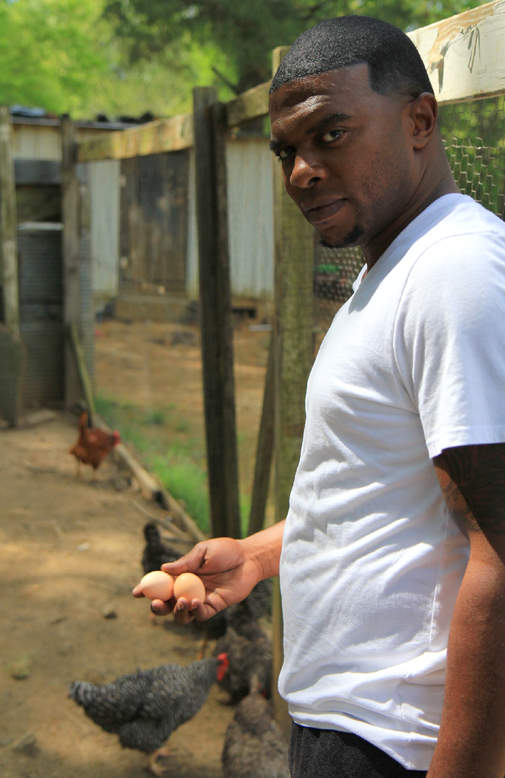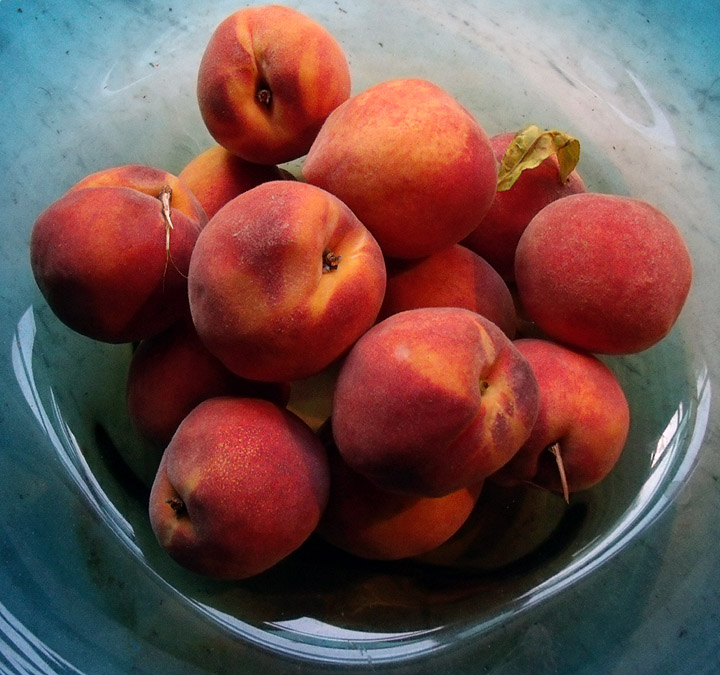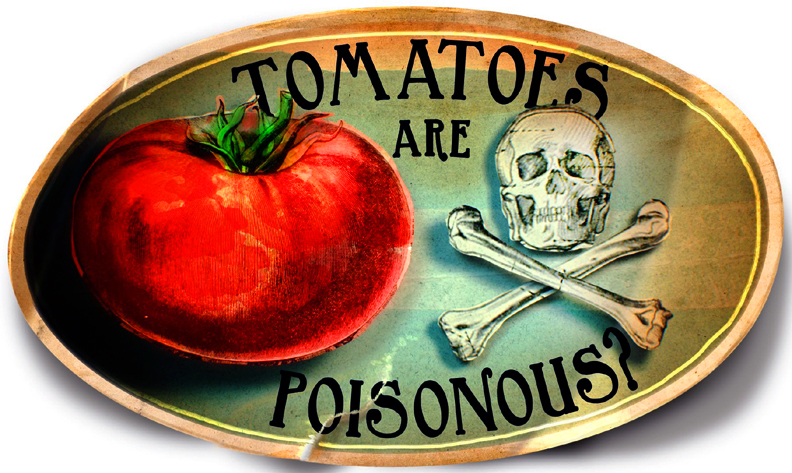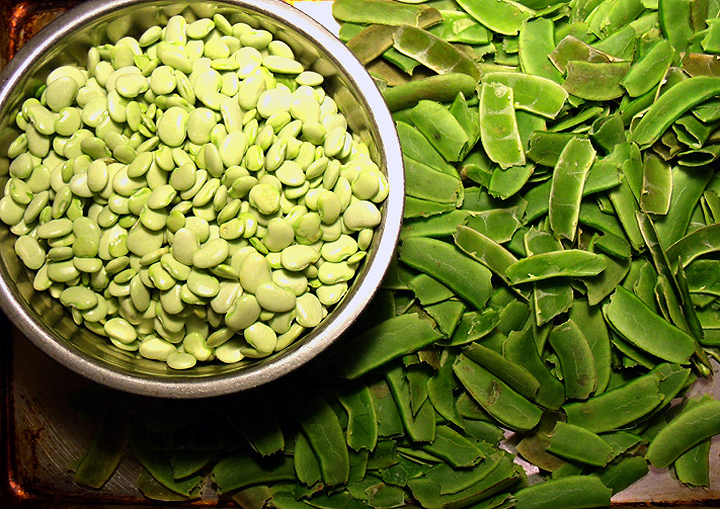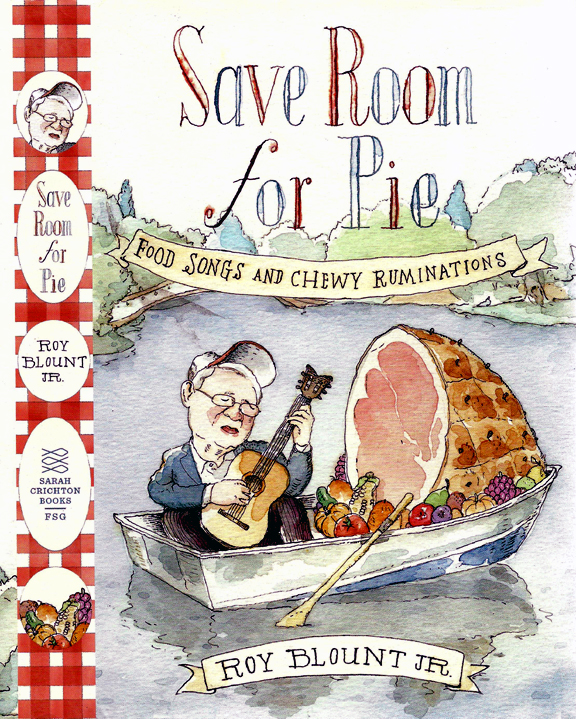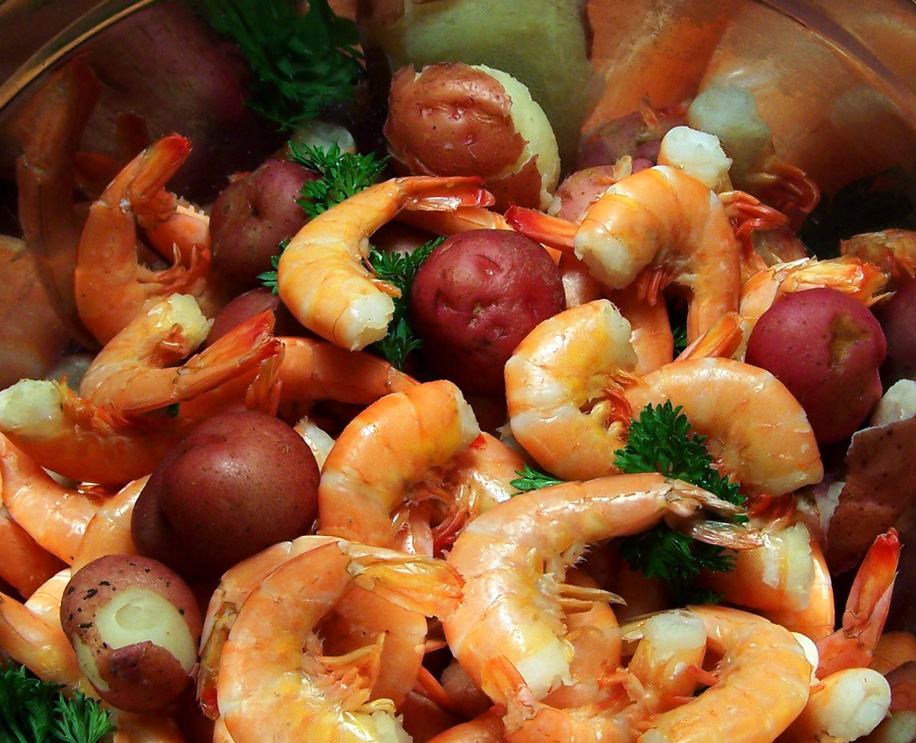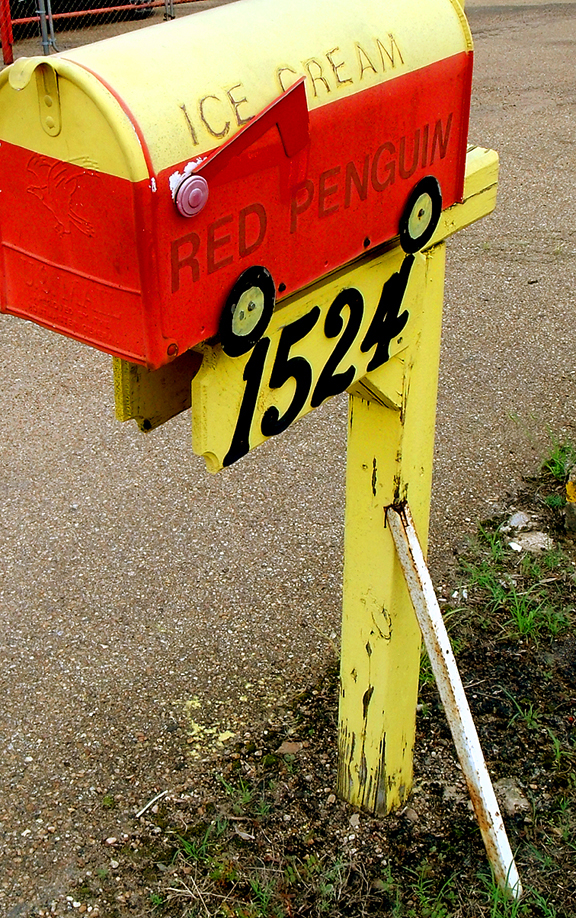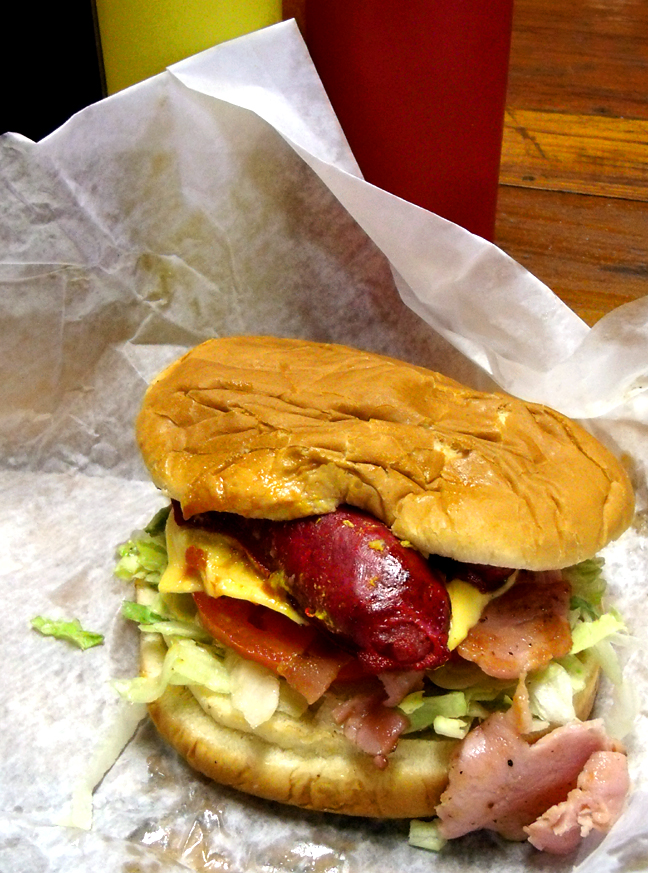The Red Knight
The story of Colonel Robert Gibbon Johnson’s public establishment of the reputedly poisonous tomato as edible might be apocryphal, but it’s still a good yarn.
According to what passes for legend, Col. Johnson mounted the courthouse steps in Salem, New Jersey on September 30, 1820 (dates vary) with a basket full of tomatoes to eat. Over 2,000 people assembled to watch him drop dead after the first bite and wagered upon the exact moment (it being New Jersey after all, where gambling is a fine art). His own doctor (who happened to be his wife’s brother-in-law) predicted that “the foolish colonel will foam and froth at the mouth and double over with appendicitis from all the oxalic acid”; if not immediately, then the good doctor said Johnson would die soon afterwards of “brain fever and cancer.” When Johnson took his first bite of a tomato, several onlookers fainted and two were reported to have regurgitated with vigor.
Of course Colonel Johnson lived, and while available records do not entirely support rampant speculation that he collected on more than a few substantial side wagers and retired to Europe, we can say with certainty that he helped to win the tomato a place on our tables.
Shelling Limas
Mickler’s Revolt
By 1986 publishing was already wedded to celebrity so much so that the best-selling cookbook that year was by “The Frugal Gourmet”, an ordained minister who was convicted of molesting teenage boys some years later. But Smith, for all his faults, was an international media presence, while Ernest Matthew Mickler (God rest his sweet soul) who in the same year published White Trash Cooking, was a dying man with a vision.
Ernie insisted on the title, which left him an open target since his simultaneously unblinking and winking approach to the stereotype of the rural South confounded people across the country as well as people on the Redneck Riviera. The only thing even remotely resembling a precedent for White Trash Cooking was written by another Floridian, Zora Neale Hurston, whose studies in anthropology brought her back home, much as it did Mickler, who threw down a gauntlet, insisting that while the nation might profile Southerners as a whole as white trash, the behaviors that earmark anyone anywhere as decent, perhaps in cases even honorable, hold sway in the American South as well, a region that is no more tragic than any other section of the country. He also knew that people outside of the South consider us low and mean, but we are (as they are) a layered society undeserving of their unilateral condemnation; our culture, our manners, our morals all have as much a measure of civilized imprint as those of our fellow countrymen, but instead of embracing our differences, they persist in considering the South and its people worthy of their collective opprobrium.
With White Trash Cooking, Mickler opened a portal of discovery into the essential character not only of the South, but of the nation; white trash cooking uses cheap ingredients, commercially frozen, dried or canned, few seasonings, packaged mixes, plenty of salt and sugar, lard and margarine in dishes that are quick and easy to cook, unsullied by any degree of sophistication. It remains the most basic form of cooking in the nation, the cooking of people who don’t read Bon Appetit, people who work a forty-hour week (or more) at a poorly-paying job with little or no insurance, living from paycheck to paycheck, struggling to make a life for themselves and their children. They wouldn’t go to a Whole Foods store unless they lived next door and had to, which is good advice for anybody without an attitude. White Trash Cooking celebrates a significant surface of our many-faceted country, one we should all recognize as uniquely ours and none others. Love it.
Save Room for Pie: A Review
With 47 books under his belt, it’s a wonder Roy Blount, Jr. can dish out another helping, but Blount is always ready with a serving of his special brand of eclectic linguistic hijinks, and Save Room for Pie has plenty and to spare. In this jaunt to the center ring, Blount takes on food, and as a native of Decatur, Georgia, his take has a decidedly Southern perspective.
Blount’s prose is riddled with non-sequiturs, often to the point of distraction; in fact, the entire work is a hodge-podge of anecdotes, stories involving food and the many celebrities with whom he has rubbed elbows (who are legion), light verse and sidebars. We shouldn’t expect a humorist to give us anything resembling a straight-forward narrative, and Blount not only meets but surpasses these expectations, which can be wearying in a work spanning 280 pages.
Not to say that Blount isn’t entertaining; he takes on dietary guidelines and healthy eating with his tongue firmly planted in his cheek. “Inside every thin Southern person,” he claims, “is a fat person signaling to get out.” He states that Velveeta has “more protein and fewer bad fats than many real cheeses” (being made of whey), and says that he has heard good things “from authorities recognized by my wife” about watermelon, egg yolk, cane syrup, lard, oysters, beef (“if raised right”), whiskey hot peppers, coffee, (dark) chocolate and butter.
His light verse covers such subjects as hamburgers, grease, eggs, gumbo, “love apples” (tomatoes), grits, catsup, “A Dark Sweetness” (cane syrup) and of course peaches. Among the more entertaining essays are on gizzards (“”The gizzard is what a chicken has instead of teeth.”), “Mississippi Music Notes” (“Did I mention that ‘Put Down the Duckie’ is the greatest music video ever made?”) and “Eating Out of House and Home” (“I’ll tell you what’s good though. Baked beans without a fly in them.”), though many of the others are just as rife with Blount’s own brand of lightly sardonic humor.
Admittedly, I am not a great fan of Blount’s writing; I prefer his off-the-cuff performances on NPR’s Wait, Wait…Don’t Tell Me!, but while with Save Room for Pie Blount loads the plate with a lot of superfluous sides (earthworms and professional bass fishing, for instance), the book is a great addition to any fan’s library, a light-hearted jaunt through Southern foodways, a worthy read if only to discover that Mary Hartwell Howorth puts lawn clippings in her pimento cheese.
Southern Boiled Shrimp
Red Penguin Postage
Chris Sartin: Keeping It Real
At first, I was trying to buy Walker’s Drive-In; I really wanted that place badly. I’d become such a fixture in there, I could feel my personality taking over, and it seemed only natural to get it, but the deal didn’t work out, so I started looking around for a place to put Sartin’s, or rather Sartain’s, since my last name is French, and I wanted to get into classic French cuisine. I went to Blockbusters in Castlewoods to drop off a movie, and I saw the Little Caesars next door was for sale. I just looked at it and though I could do my own pizza place. So I called the guy, Johnny Solomon, who owned all the Little Caesars and Popeyes in the area. He said he wanted $50,000 for the place, I offered $30,000, he came back with $35,000, and that was it. I started with $35,000. My dad loaned me the money out of his house equity. This was 2000. We opened February 7, 2001.
I decided I was going to open a pizza place, and when I realized I could do that, what with the casualness of the atmosphere, I realized I could simply be who I wanted to be and not worry about cutting my hair or what clothes I wear and putting off the customers. I decided I would make the theme of the place the music of the Allman Brothers, the Grateful Dead, the blues, the jam scene of the Sixties and Seventies because I had to be in there a hundred hours a week and why not enjoy myself while I’m there, hang up the pictures I like on the wall, almost make it like my college dorm room. It was almost accidental, how it all came together. I didn’t know what I was going to do. I was 30 years old. I had tried the insurance business; my dad and his brothers were very successful in it, and somehow that’s what I figured I’d always end up doing, but I just didn’t like it. It’s not that it’s a bad business, it just wasn’t for me. I was an artist; I needed to write, paint, sing, play, cook, and that’s what I needed to do to be happy. My Dad got behind me, and I’ll never forget that. That was a big deal, it meant a lot to me. He had the money to get me started at the time. He wasn’t wealthy when he was growing up and had to work to earn everything he got, all the brothers did, so he wasn’t going to just lay it out there for me. But this seemed like a safe thing; if it failed, it would sting to lose $35,000, but not change his life.
And it went off like a rocket. I think people wanted something real. Also, there wasn’t another gourmet pizza shop in Jackson at the time. I don’t think at all. We made everything from scratch, had some great music playing. It helped that we were next door to a Blockbusters at the time, which was before Netflix and all that. I had two guys in the kitchen, and I took some of the recipes that I knew from Walker’s, like the crawfish bisque and a bread pudding, you know the bread pudding that Miss Hazel baked and I would watch her. I took a little bit of something from everywhere I worked, brought it to the table and went to my guys and said, “Alright, let’s do this.” The recipes have changed up since then. The pizza dough now is nothing like it was back then. Now it’s a 300-year old French artisan recipe. We used everybody who was there and pulled upon their knowledge and experiments. Over the years I changed things to make them better, particularly the pizza crust, which I wasn’t happy with in the beginning. We sold a lot of pizzas and people loved it, but I wasn’t satisfied with it. I think in retrospect it was really the ovens, not the recipes, so now that’s why I have brick ovens in every location. I changed up the recipe and moved forward.
We moved into Hal & Mal’s in ’02. Malcolm would come into Soulshine at Castlewoods for some reason, and you didn’t see him that often outside the city limits. We started talking, and I kept thinking about it because I often hung out at Hal& Mal’s, thinking there was room there for a Soulshine. They weren’t using that back room all the time, and so I said, “Hey, man, we’ll open up a Soulshine at Hal & Mal’s. He loved the idea. Hal and Charly didn’t like the idea, they didn’t have anything against us, they just saw trouble coming, and they were right. My first idea was to pay rent and have the bar in there, but you can’t buy two liquor licenses under one roof, so I said how about I don’t pay any rent, you sell the liquor, and I’ll keep a crowd in this room for you. I’ll make it worth it to you just for me to be here and you can sell all the alcohol you want based on my customers. And that was okay, but it still wasn’t worth it for both parties.It didn’t make sense. Then there was a lot of partying going on, and that’s really what made it fail. I learned a lot of lessons. I pulled out of there after being mugged for a third time in Jackson. My car was broken into, I was losing money and on top of that, I just wasn’t sure what I was doing and everybody was partying. There were other factors, too, but it might have worked if I’d known what I was doing, but if I’d known what I was doing, I’d never have gone there to begin with, nothing against Hal & Mal’s.
Anyway, I decided to go out to Highland Colony Parkway because I could see it all going there. I could see the future. We were the first restaurant out there. I signed a lease in ’04, we opened in ‘06. It took a year and a half. I just knew that’s where the white-collar world was headed, you could see it happening. There was nothing there, just this one little center that I’m in which is a big development now. But I could just see it coming. I believe in the township; I thought it would be cool to live there, like being in Belhaven in the Fifties. I could walk to the grocery store and this and that. So I got there, and it was too soon. I lost my ass for a little while. Once again, I really didn’t know what I was doing, I just had a great idea and I could talk to people and put out good food, make sure the place was clean, but when the business shuts down, when you’re through serving people, when all the food it put up, there’s still a lot of work to do, in the office, at the bank, with your attorneys, whoever it is, and I didn’t know anything about it. And what’s maybe even worse, I didn’t want to know anything about it. I just wasn’t interested in it.
Really, I’m just a glorified bartender at forty-six, and that’s alright with me. I’m not special; I just feel like I had a dream, and I was willing to lay it all on the line to either lose it or end up ultimately happy. I was willing to lose everything because I was literally just miserable. As an artist, you know that if you don’t create, you’re miserable. I had to create in some shape or form. A couple of years into that store, we just weren’t where we needed to be. That area still hadn’t developed yet. We got there too soon. So that’s when I went to Porter & Malouf and asked them to be my partners, to back me and help me with the business end. I’d been going out to Tim Porter’s house cooking pizzas in a brick oven at parties, so I went to them and said, “I need help.” They love me and they love the place, and they decided to do it. When I realized how backed up I was, it turned out to be a substantial investment, which surprised both me and them, but they were in. They stepped up to the table, and we became partners. That was 2008, and we’ve been together ever since.
Once we got some organization, the business really took off; we caught up on taxes and bills that had me behind the eight ball. The story was that I moved the Hal & Mal’s location to Highland Parkway, which was the way I spun it to the press, but that was bullshit because I was just a failure there. I shut it down, but I knew what I was going to do in Ridgeland, so I spun it off to the public as “We just had to get out of Jackson.” We eventually took off in Ridgeland, and it’s been great ever since. We moved from Castlewoods to Old Fanin, then we moved out Lakeland Drive again, now we’re out there in a big place right on Lakeland Drive. It’s done really well, and I’m really pleased with it. Those people out in the Reservoir community have been eating Soulshine pizza for fifteen years. They’ve been really good to me. I grew up out there.
When I first opened the original location in Castlewoods, it was just strictly a to-go Little Caesars spot. My mother, my sisters and I went in and painted and made it cool. I put the stereo in, took all the Little Caesar’s stuff down, played music over the speakers in the kitchen and then I decided to put in a dining area. People kept saying that they needed a place to sit and the bay next door in the center where we opened was available, so I got it, put tables in there, built a little makeshift bar, put in a few TVs, and I’d actually bartend and wait on every table myself. And everybody who came in, most of them I knew, had known them for years and years, and if I didn’t know them, I got to know them really fast. It was a magical time. I was doing what I believed in and that was really all that mattered. The people liked the food, they liked the music; they liked the way they got treated. It was all about service, and it was all about art, expression, and I didn’t think about much else. I still don’t think about much else. That’s why I have partners. You have to worry about it, you have to get involved, and they push me to get more involved, but it’s hard to get anyone who’s forty-six years old, ADD, an artist a musician, writer and songwriter to sit down at a computer and go through a P&L. It’s hard for me to do because I don’t have a natural interest in it; I just make sure it gets done.
Why Oxford? There are a lot of reasons and one of the reasons is you have to get your partners to buy into it, but my partners are Ole Miss guys, and I knew they’d like it. Everybody wants to do something in Oxford, but what most people don’t realize is that Oxford really isn’t Oxford unless a ball game is going on, at least when it comes to retail. Everybody’s there for whatever big occasion is going on, but on a Tuesday in July, what are you going to do? It’s better now that people are moving there to retire. This coming April we’ll have been there for four years. The anniversary is April 20th (4/20). I opened it up on that date on purpose. We didn’t have our kitchen quite ready, but I opened up and served hot dogs that night so people would come in and drink and our anniversary would be 4/20. That makes it really easy for me to remember, because I never remember dates, and the number spans the culture of Soulshine. But the Oxford location has been fabulous, has kicked butt. When we cleaned up the floor of that location, stripped off the years of filth that had built up, we discovered that the site was once the location of one of the first Kroger’s in the state. It took my breath away. I’ll never forget looking at that and thinking wow this is history here. I’m a history major, and any time I can put in a Soulshine, and I only have four, I strive to keep that historical significance if possible, that feeling of realness, I don’t want them all to be alike. I’m always torn over how many I’m going to have and keeping it real, not being a sell-out.
The music is still relevant, and there’s still good music that comes out. You’re always going to have people listen to that kind of music; it might not be the masses, but the music is still there. The music is timeless. I didn’t call it “artisan pizza” back then; I didn’t call it anything. It was just Soulshine, and it still is. I don’t like to call it anything else. It’s always going to be Soulshine pizza, and now we’re making the switch to stone-baked. As I’ve gotten older, I’m not Mr. Detail still, but I’m also striving to get better. To be up where we need to be, I felt like we needed to take the cooking method to another level, to another tier, and that’s what we’re doing this year with the ovens to match everything else, which seemed to be so perfect. And I felt like you look on the internet now and you see brick-fired, coal-fired, wood-fired and felt like we needed to do that. And we have; we have a brick oven in Oxford and Nashville, and we just installed one in Flowood last week. All I have to do now is to install one in the Ridgeland store, and it will take a couple of weeks before we do that. I feel like that gives me the confidence to move to another fifteen years and look up when I’m sixty-one and say, “Yeah, okay. What’s next?”
If I had to look back on life, the last fifteen years of my life and the hardships I’ve gone through, from divorce to being broke, broke, broke, somehow I dug in and made it happen Soulshine has meant so much to me. It wasn’t just a restaurant that I opened up that could fail or be successful. It’s my life on the walls. Everything means something to me, the customers will always mean something to me, the music, everything. It meant more to me than money or my perceived success. But ultimately, in the end, taking care of the people and what I believe in paid off for me down the road. I consider myself a success now. I still think I’ve got a lot of room to get better, and I think that’s what drives me a lot, too, that I’m never satisfied; not with me, or the business or whatever. I’m satisfied that I’m living the life I’ve always wanted to live in certain ways, but I’m competitive. I’ve always been athletic, and I was out there playing tennis until I was forty and wanting to win.
So I think my competitive nature pushes me. I wasn’t going down, and I wasn’t going to let anybody take me down. I also felt like I owed it to the people not to give up; the people who came in there, the people who supported me and the people who worked for me, who had jobs. There were many times when I could have come in on a Monday and said to hell with it, it’s not worth it anymore. That happens all the time in the restaurant business, people just give up. But I’ve never let it go, and I still won’t. It’s me not letting go of myself, which is a big part of my identity and who I am. Sometimes people say your job should not be who you are or whatever, but I turned my job into who I was. I sell myself. When you open up a restaurant, people are going to come see you because you are who you are and it’s about you, but after they’ve eaten there enough times, maybe had a bad meal or two, and you’re having trouble, they just quit coming. They’ll be there to hug you when you close, but the food has to be good, too. And it has been. I’ve never been quite satisfied with it, but I doubt if I ever will be.
I decided to open a Soulshine in Nashville because my oldest daughter lives there, and I knew after being remarried and having two more daughters, I wanted them to be raised together. So we moved there after we opened in 2011, in Midtown near Vanderbilt. It’s a killer place; we have a rooftop patio with a stage up there. The Who’s Who list of legendary musicians and current stars who sit in there with our Soulshine Family Band is very deep. Once I was singing, and I look up and there’s Steve Tyler, for instance. Another time I’m standing in there around Halloween. I see this cat and I’m thinking, “Is that Billy Gibbons or is this dude in costume?” Well, it was him. This stuff happens all the time. I’m floored all the time by who walks in and tells me, “This place is cool, man, Nashville needed something real.” Maybe that’s what I want to have on my tombstone:
Brother Chris Sartin lies here.
“He kept it real”
Nick Wallace: The Palate as Palette
As culinary curator at the Mississippi Museum of Art, I match food and art together. We’re planning on starting an art gallery in the kitchen, a food art gallery. That’s where I come into play; with a chef’s table in the kitchen, I’ll be able to curate every meal and tell a story. The new kitchen in the museum has a complete chef’s table, a mounted-to-the-wall table we put in about a month ago that will never go anywhere. I’ll let people walk through the kitchen and view the art, beginning on our monthly ‘Sipp Sourced event on third Thursday. People will be able to come in to the museum and get a kitchen experience. It’s never been done quite like this in Mississippi, and it’s one of the things that make chefs more intelligent by bringing us out of the box. Often we get caught up in this stereotype of Mississippi: stewed collard greens and fried chicken and such. We need to tie food in to more than what you usually think of when you consider it. If you sit down and talk with my grandmother, and if you open your ears up and really listen and let her curate her past, you can stitch that into artwork; when you look at her pecan-wood tables you can tell they have a story. If you go to my grandmother’s house, really anybody’s grandmother’s house, you’ll find art. We tend to focus on the plate on the table, but we need to begin thinking about everything else in the environment. That’s what I want to do; I want to curate my surroundings.
I will be at the James Beard House on April 13 with Mitchell Moore from Campbell’s Bakery and Dan Blumenthal from BRAVO! It’s a beautiful thing when you have fellow chefs who are honored to do it; they know what the business is and know we have to bring the finest quality we can to the table. When the James Beard Foundation invites you, it’s for a reason, and it’s an honor to be one of the ones they call on from Mississippi. I’ve done two other events with the James Beard people. I’ve cooked twice in the house itself. I also did the Hamptons event where they honored Carla Hall. Mitchell and Dan have been with me at every event. It’s a tough experience, but fun to do and showcase Mississippi. Carla talked about getting me on The Chew soon. I can’t wait until that happens, so I’m going to keep bugging her about that so one of the Mississippi fellows can be on The Chew talking about Mississippi.
Everywhere I go, I celebrate Mississippi. With the menu for the Beard event, I will try to take it all the way. For appetizers, the Simmons Delta catfish are smoked and made into croquettes, the pickled radishes are coming from Madison, and I will pair it up with a pickled peach and dry sake spritzer with lemon oil celery bitters. The other appetizer dear to my heart is the Mississippi Gulf shrimp boudin served on Mitch’s house-made crackers. We’re doing fennel sauerkraut and pairing that up with a Gibson-style martini with pickled mustard seed and pickled striped beets. The other group that’s supporting us in this dinner is Trinchero Family Estates in Napa Valley. I met those people when I was a corporate chef with Marriott, and so nine years later I call them to pair up Mississippi food with Napa Valley wines. And they’re donating it all. I’m still going to be taking Cathead vodkas and Hoodoo coffee liqueur that we’ll be pairing with our desserts and other things we’re cooking. I’ll also take a few Mississippi beers to pair up with our all-time famous pickle brined fried chicken, maybe a Sweetwater.
Our Jackson Public Schools partnership started last November. I was already going into the cafeterias and working with the staff. It’s a different world, so I’m still trying to get adjusted to it, since as a chef, having worked in restaurants all my life and going into a cafeteria, it’s a totally different environment. Honestly, I probably jumped in a little too soon and was a little too aggressive about it, so I had to learn how to think about things a little differently. I have to really connect with the kids as opposed to a guest who is going to come into your restaurant. When I do a menu now, I might even turn on some cartoons just to be in the background where I can hear them, but I have to take myself back to where I was when I was a kid to relate, and it’s kind of tricky. I’ve been working with the kids, the cafeteria workers, the staff and the parents. Now we’ve rolled out this concept in which I do a rotating menu that changes every month. The menus are highlighted on Mondays, when the kids bring their parents, their grandparents; their families come out and dine with them. This month we’re doing a “Mississippi Italian” menu. We’re doing a homemade flatbread pizza, a veggie pizza that’s made to order with things like fresh broccoli, squash, zucchini, peppers, onions, tomatoes, and this pizza is the number one thing the kids are asking for. You’d think they’d want sausage and pepperoni, but the kids are excited about their vegetables. Instead of just giving them a boring plate we put a fun twist on it. I try to balance myself between the two schools we’re in now, Blackburn and Powell Middle School, but as soon as we work out the kinks a little bit more the goal is to go into all thirteen schools later this year.
Working with the staff in the schools takes me back to a world I’m used to, that of being a corporate chef for Marriott. I floated around to at least seven hotels at one time, so I had to instill everything I had been taught into the chefs at each hotel. It’s the same thing with the cafeteria managers and the different schools; you get on the same level with one another. I invite them to the kitchen here in the museum, we play around in the kitchen, and we establish a relationship. They see how I like to touch food, and move food and season food so they can map me and get closer to how I like to work in the kitchen. We take photos, make recipes and put them in a book. They’re beautiful people. I remember coming up and being stuck into a hotel environment where I’m cooking the same foods over and over again. I thought corporate had forgotten all about me, I’m tired of cooking the same chicken breast, when are we going to do something different? With Marriott, you couldn’t just change things overnight; you had to wait for it to become system-wide. This sense of institutionalization in public schools is the same.
Coming up on February 18th is is the first year anniversary of my monthly ‘sipp Sourced pop up restaurants. We’re going to celebrate with Mississippi burgers, and we’ll have “Art for Burgers” too. I’ll be grinding local goat and veal, chicken from Hattiesburg, beefalo out of Morton, and pork and beef from Lena. All will have a different theme, all from different counties. We’re also revamping the Mississippi Museum of Art garden, planting a pumpkin patch for the kids. I work with Bill Evans, who’s with MSU out of Crystal Springs, and he assists us pro bono. My goal is to put in a small chicken coop; wouldn’t it be cool to drive down Court Street in downtown Jackson and see chicken coops?
